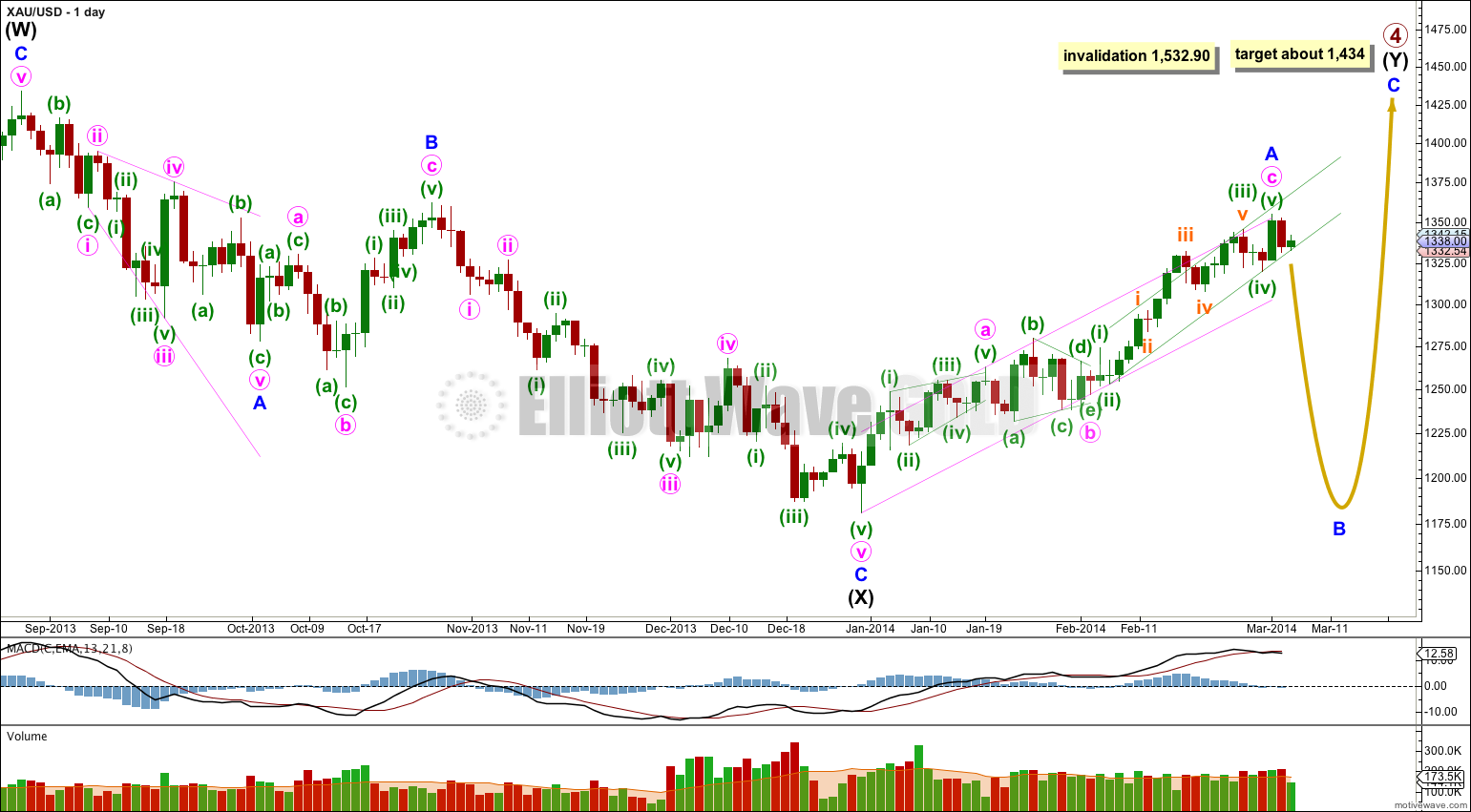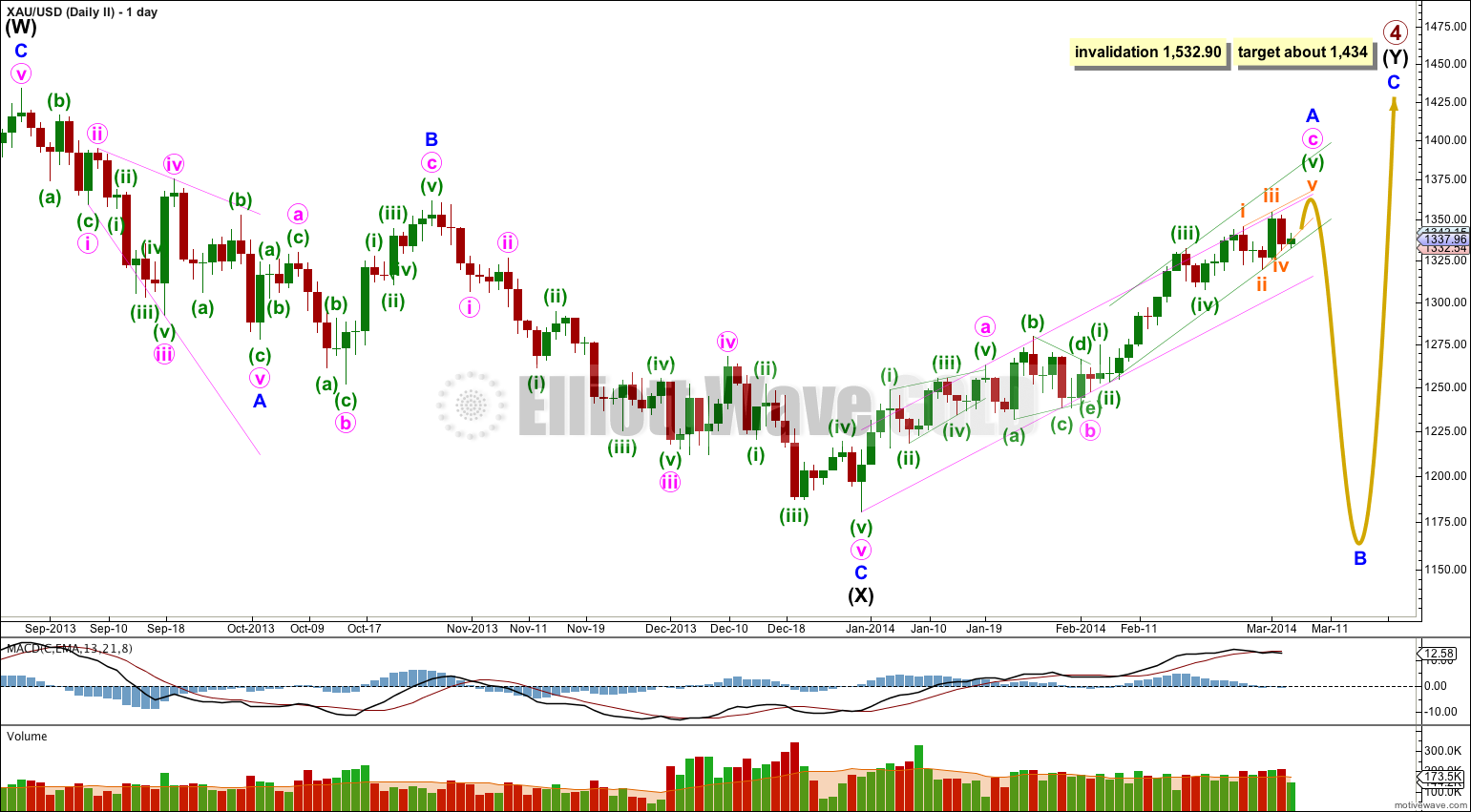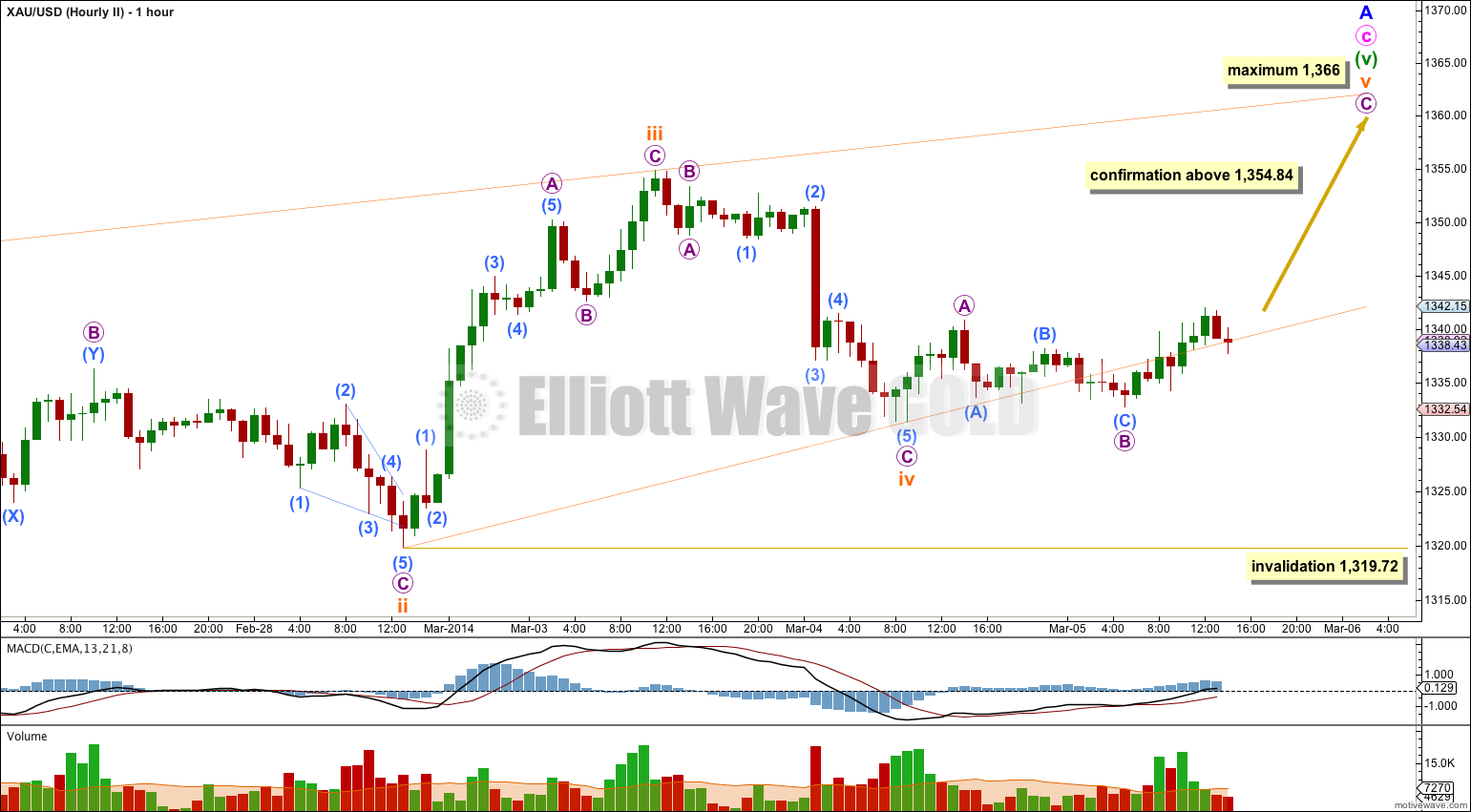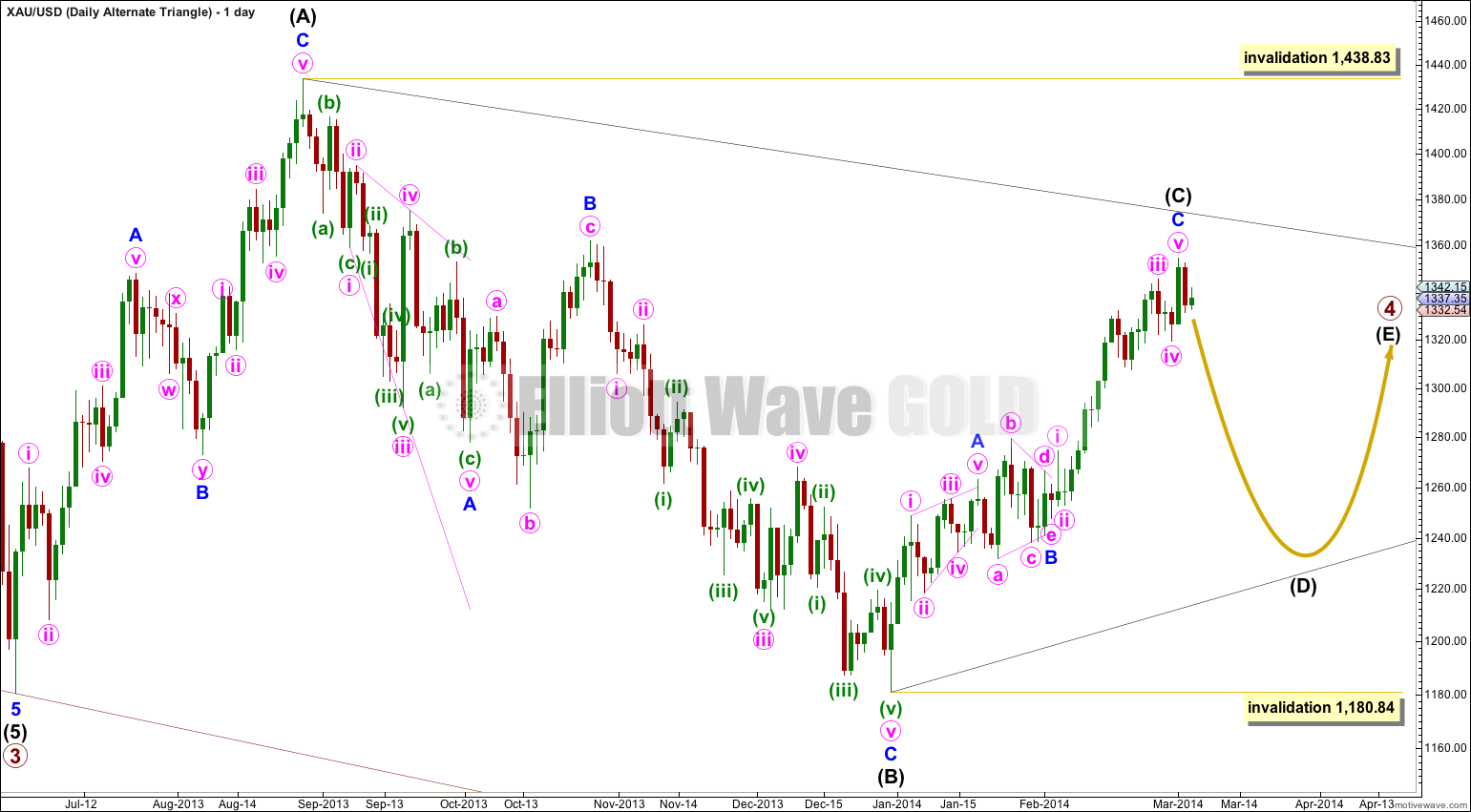Price has moved very slightly higher in a mostly sideways day. Both wave counts remain valid and both remain the same.
Summary: The situation is unclear. While price remains within the green channel on the daily chart we should assume that the trend remains the same, upwards.
This analysis is published about 03:20 p.m. EST. Click on charts to enlarge.
First Wave Count.
Gold is still within a large fourth wave correction at primary wave degree which is incomplete.
Primary wave 2 was a rare running flat. Primary wave 4 is unlikely to be a flat correction because it is likely to show structural alternation with primary wave 2.
The first upwards wave within primary wave 4 labeled here intermediate wave (W) subdivides as a three wave zigzag. Primary wave 4 cannot be an unfolding zigzag because the first wave within a zigzag, wave A, must subdivide as a five.
Primary wave 4 is unlikely to be completing as a double zigzag because intermediate wave (X) is a deep 99% correction of intermediate wave (W). Double zigzags commonly have shallow X waves because their purpose it to deepen a correction when the first zigzag does not move price deep enough.
Primary wave 4 is most likely to be completing as a double combination: zigzag – X – second structure. The second structure labeled intermediate wave (Y) may be either a flat or a triangle. For both these structures minor wave A must be a three, and is most likely to be a zigzag.
Minor wave A is either complete or close to completion. I want to see the green channel on the daily chart clearly breached before having any confidence in a trend change. While price remains within the green channel the second wave count will be possible. At this stage I very slightly favour the first wave count, but the second wave count is still entirely possible while price remains within the green channel.
Primary wave 4 may not move into primary wave 1 price territory. This wave count is invalidated with movement above 1,532.90.
This main wave count sees minuette wave (iii) over at 1,343.35 and minor wave A may be complete.
Within minor wave A there is no Fibonacci ratio between minute waves a and c.
Ratios within minute wave c are: minuette wave (iii) has no Fibonacci ratio to minuette wave (i), and minuette wave (v) is just 0.60 longer than 0.382 the length of minuette wave (iii).
Ratios within minuette wave (iii) are: subminuette wave iii is just 0.09 short of 1.618 the length of subminuette wave i, and subminuette wave v is just 1.12 longer than equality with subminuette wave i. The excellent ratios within minuette wave (iii) increase the probability of this wave count.
I have adjusted the labeling within subminuette wave i downwards because the new labeling has a better fit on the five minute chart. Subsequent sideways and upwards movement is very corrective, which is most likely a second wave correction that is very likely to be complete now. Within subminuette wave ii micro wave C is just 0.23 short of equality with micro wave A.
At 1,304 subminuette wave iii would reach 1.618 the length of subminuette wave i.
Movement below 1,319.72 would invalidate the second wave count and provide a little confirmation that this first wave count may be correct. I would only have confidence in this first wave count and the target if we see a clear breach of the green channel on the DAILY chart.
Subminuette wave ii may not move beyond the start of subminuette wave i. This wave count is invalidated with movement above 1,354.84.
Second Wave Count.
I am considering this possibility mostly because of the overall look of minute wave c on the daily chart. I want to see minuette wave (iii) over at 1,332.28 because there it has the best look on the daily chart. The following overlapping movement may be an ending diagonal for minuette wave (v).
With this wave count the green channel does not have a good fit when it is drawn using either of Elliott’s techniques, so I have drawn it as a best fit here. The lower green trend line is the same for both daily wave counts.
This second wave count allows for one final upwards thrust to complete the structure for minor wave A.
This wave count sees minuette wave (iii) over earlier. Minuette wave (iii) has no Fibonacci ratio to minuette wave (i).
Ratios within minuette wave (iii) are: subminuette wave iii has no Fibonacci ratio to subminuette wave i, and subminuette wave v is 3.95 longer than equality with subminuette wave i. The ratios here are not as good as the first wave count which reduces the probability of this second wave count.
Within an ending diagonal all the subwaves must subdivide as single zigzags with no other structures allowed. This is why subminuette wave iii is labeled as a zigzag.
The diagonal would be contracting: subminuette wave iii is shorter than subminuette wave ii, and subminuette wave iv is shorter than subminuette wave ii. This limits the length of subminuette wave v to no longer than equality with subiminuette wave iii at 1,366.
Subminuette wave v must subdivide as a zigzag. So far micro waves A and B within this zigzag may be over. However, movement within subminuette wave v has so far moved below the 2-4 trend line of the diagonal. This is a little unusual; I would have expected this trend line to provide support and not to be overshot. This slightly reduces the probability of this wave count.
Within the diagonal subminuette wave iv may not move beyond the end of subminuette wave ii. This wave count is invalidated with movement below 1,319.72.
Alternate Daily Wave Count – Triangle.
It is also possible that primary wave 4 may continue as a regular contracting (or barrier) triangle.
This wave count has a good probability. It does not diverge from the main wave count and it will not diverge for several weeks yet.
Triangles take up time and move price sideways. If primary wave 4 unfolds as a triangle then I would expect it to last months rather than weeks.






I PUT THE TOP AT 1355 …